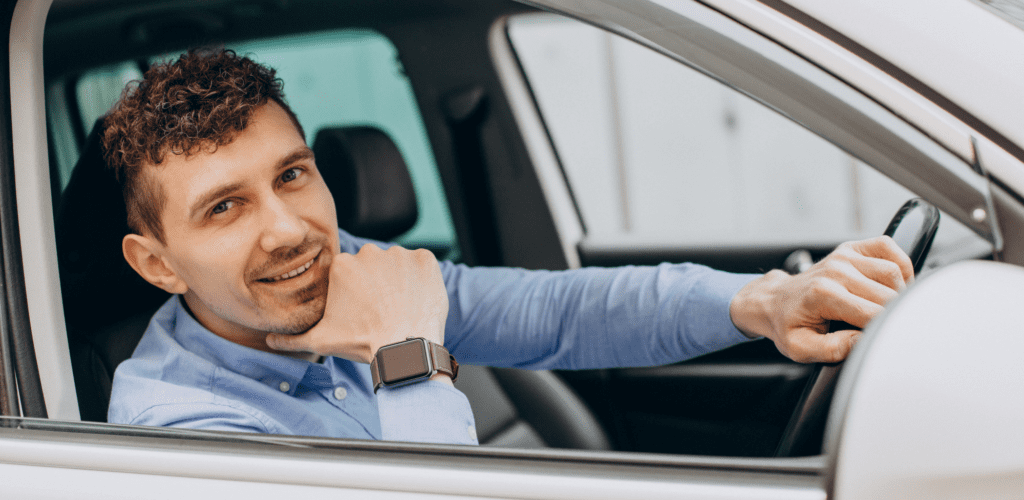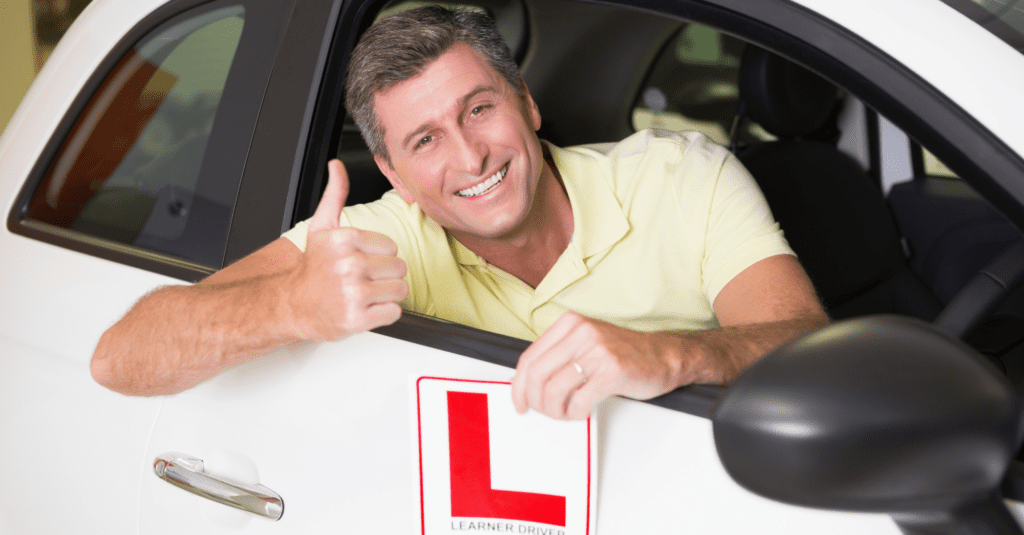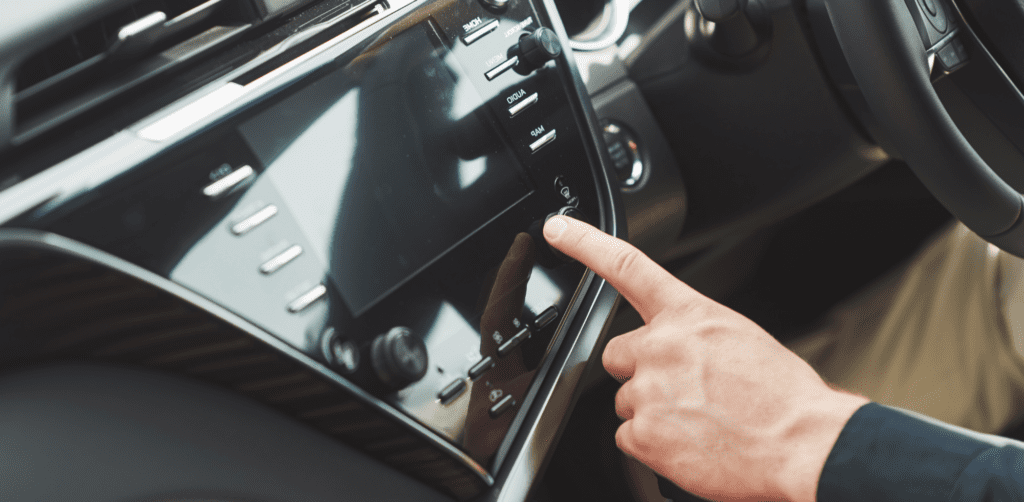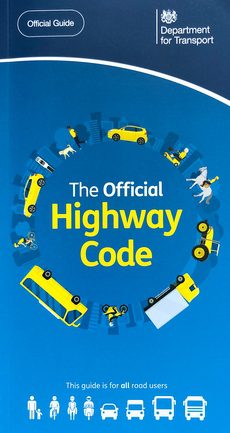
Securing your full driving licence is a significant milestone, marking the end of formal lessons but not the end of your learning journey.
Driving is a skill that benefits from continuous improvement and adaptation, particularly in the early stages of your driving experience.
Below, we’ve gathered essential advice for new drivers aiming to refine their skills and navigate the roads with greater confidence.
Building Confidence on the Road
While your driving instructor has equipped you with a solid foundation, there’s always room for growth. The journey to becoming a proficient driver involves gaining confidence, which comes with practice and exposure to different driving conditions.
Continuous Learning and Adaptation
Driving is an ever-evolving skill set that requires adaptability and a willingness to learn. Whether it’s mastering new driving techniques or staying abreast of changes in road laws, the commitment to ongoing learning is crucial for safe and confident driving.
Avoiding Common Pitfalls
New drivers often face similar challenges, from navigating busy intersections to mastering parallel parking. By focusing on these common areas of difficulty and seeking solutions, you can avoid the typical mistakes that hinder many new drivers.
Put the P Plates on
Why Use P Plates?
After the excitement of passing your driving test and the relief of discarding the L plates, you might consider using P plates.
These plates, although optional, are highly recommended for all new drivers. P plates signal to other motorists that you have only recently passed your driving test.
This indication can be advantageous even if you’re hesitant to advertise your new driver status. It encourages other drivers to exercise more patience with you, potentially reducing instances of road rage or tailgating.
Duration of Use
It’s advisable to keep the P plates on your vehicle for at least a few weeks. This period allows you to acclimate to driving without supervision confidently.
Once you feel secure and comfortable driving on your own, you can then decide to remove the P plates. This marks your transition into a more confident driver, ready to tackle the roads without the need for a visual cue of your recent qualification.
As a new driver, navigating the maze of local roads without the vast knowledge experienced drivers seem to possess can be daunting.
To minimise the chances of making wrong turns or getting lost, consider investing in a satnav. A satnav is not just a tool for keeping you on the right path; it offers much more.
Features and Advantages
Depending on the model you choose, a satnav can provide real-time traffic updates, suggesting alternative routes to avoid congestion.
Furthermore, it can alert you to recent road changes or closures, ensuring you’re always informed of the best route to your destination.
This technology not only simplifies your journey but also enhances your driving experience by reducing stress and saving time.
Get Used to Your Car
Adjusting to a New Vehicle
If your driving lessons were not conducted in your own vehicle, your initial experience behind the wheel would have been in your instructor’s car.
Consequently, when you purchase your own car, especially if it’s a different model from your instructor’s, you will need some time to adjust.
Transitioning to a new vehicle entails more than simply starting the engine and setting off. Various cars feature distinct biting points, gearboxes, and control setups.
Gaining familiarity with driving different models will, over time, make these adjustments easier. However, for the moment, it’s essential to follow guidance on adapting to a new car.

Maintaining Your Vehicle
Becoming accustomed to vehicle maintenance is equally important. Regular use demands that your car is in excellent condition.
To ensure this, adhere to essential maintenance tips. Proper upkeep not only prolongs the lifespan of your vehicle but also enhances safety and reliability on the road.
One Step at a Time
Gradual Adjustment to Solo Driving
Transitioning to solo driving after passing your test is a significant change. Initially, you might feel confident, but the experience of driving without supervision can be surprisingly different. The absence of an instructor to offer guidance or reassurance means facing unfamiliar situations alone.

Building Confidence on the Road
Begin your solo driving experience with short trips around your local area. This allows you to get comfortable with the vehicle and the act of driving without immediate support.
Progressively, venture into quieter, residential streets before challenging yourself further by driving into the town or city centre. Once you gain confidence in these environments, you can advance to navigating dual carriageways and motorways.
By adopting a step-by-step approach, you allow yourself the time to adjust to driving independently, ensuring you develop the skills and confidence necessary for various driving conditions without the safety net of an instructor.
Need More Driving Lessons?
Considering Additional Lessons
While many new drivers feel ready to navigate the motorways confidently immediately after passing their test, it’s not uncommon for some to feel less assured.
If you find yourself feeling uncertain about your driving abilities, contemplating further driving lessons is a worthwhile consideration.
Opting for additional lessons doesn’t signify regression in your learning progress; rather, it’s a proactive step towards addressing any nervousness directly.

Options for Enhancing Your Skills
Most driving instructors provide Pass Plus courses or standard lessons tailored to new drivers seeking to refine their driving skills, alleviate anxiety, and enhance self-confidence.
These lessons can be particularly beneficial if you feel deficient in specific aspects of driving. For instance, if you learned to drive during the summer, you might lack experience in winter driving conditions. Likewise, daytime learners might find driving at night challenging.
Alternative Ways to Gain Experience
If the idea of spending more on lessons is less appealing, consider practising with a family member or friend who can offer support and guidance.
The key objective is to accumulate more driving experience and build confidence. Any form of practice, as long as it’s conducted safely and constructively, can be considered beneficial.
Don’t Have Too Many Passengers
The Challenge of Multiple Passengers
For many new drivers, the urge to showcase their driving abilities to friends and family can be strong. However, it’s advisable to resist this temptation initially.
While you may have grown accustomed to driving with a single passenger, such as your driving instructor, handling a car full of people is an entirely different experience.

Impact on Driving Ability
Introducing more than one passenger into your vehicle can significantly affect your driving, especially if you’re not prepared.
Firstly, a full car can obstruct your view through the rear window, complicating your ability to make necessary observations.
Moreover, the increased noise level with multiple passengers can lead to distractions, pulling your focus away from the road.
Gradual Adjustment
Begin by driving with just one passenger and gradually increase the number as your confidence and ability to manage distractions improve.
This approach allows you to adapt to the added responsibilities and challenges of carrying more passengers without compromising your safety or theirs.
Avoid Distractions
The Impact of Music on New Drivers
You might have compiled a playlist of your favourite driving songs during your learning journey, but it’s wise to press pause initially.
While music can indeed make a long journey more enjoyable, it can also serve as a distraction for new drivers. It’s likely that you haven’t had much practice driving while listening to music, as most instructors prefer to keep the car quiet during lessons.

Gradually Introducing Music
Wait until you feel fully confident driving unsupervised before you start to listen to music. Creating a playlist in advance is a smart move, as it eliminates the need to interact with your entertainment system while driving, helping you maintain focus on the road.
Managing Other Distractions
Similarly, it’s crucial to manage the temptation to use your phone while driving. During lessons, your instructor would have discouraged phone use, but driving alone might tempt you into bad habits.
To avoid distractions and remain lawful, place your phone in the glove compartment or set it to silent before you start your journey.
This simple step can significantly reduce the temptation to check your device and help you stay focused on driving safely.
Be Mindful of How You’re Driving
The Cost of Driving
For new drivers, navigating the costs associated with driving can be daunting. After the initial expense of purchasing a car, there are ongoing costs to consider, such as taxation, insurance, and not to mention the frequent refuelling.
These expenses can accumulate quickly, particularly if you’re not mindful of how you drive.
Reducing Fuel Consumption
There are several strategies you can employ to save money on fuel. By keeping your rev count low, braking gently, and changing gears smoothly, you can significantly reduce your car’s fuel consumption. These driving habits not only help in saving money but also contribute to a smoother ride.
Benefits for Insurance
Adopting these fuel-efficient driving techniques can have additional benefits, especially if you have a telematics (black box) insurance policy.
Such policies often reward safe and efficient driving with lower premiums. For more detailed tips on how to save fuel and potentially lower your insurance costs, you might want to explore further resources, such as a guide on the top 10 ways to save fuel.
Review the Highway Code
The Importance of Refreshing Your Knowledge
Learning to drive involves absorbing a vast amount of information, some of which can be forgotten over time. Even experienced drivers may struggle to recall specific details such as stopping and braking distances.
While it’s normal to forget some of the more specialised theoretical knowledge, a strong grasp of the core road rules is crucial for safe driving.
Keeping Your Theoretical Knowledge Current
The theory test pass certificate expires after two years for a good reason: our theoretical understanding of road rules needs regular updating.
This necessity highlights the importance of periodically revisiting the Highway Code and theory test revision materials.
Benefits of Reviewing the Highway Code
Re-familiarising yourself with the Highway Code not only ensures you are informed about the latest rules and regulations but can also help reduce anxiety about driving.
Armed with updated knowledge, you’ll feel more confident and prepared to drive unsupervised. Making time to review these materials is an invaluable step towards maintaining safe and informed driving practices.
Confidence is Key
Recognising Your Achievement
As a full licence holder, you have likely accumulated over 40 hours of driving experience under the guidance of a DVSA-approved instructor and succeeded in passing the driving test—a feat not achieved by over half of learners on their first attempt.
Despite these accomplishments, it’s common for new drivers to experience feelings of inadequacy or nervousness when comparing themselves to more experienced drivers.
Building Self-Confidence
To overcome these feelings, it’s important to adopt a positive mindset. Remind yourself of the journey you’ve undertaken from your very first lesson to successfully passing your test. This achievement is a testament to your capability and right to be on the road.

Handling Pressure
If you find yourself hesitating or feeling pressured by other drivers, remember to take a deep breath and recall the techniques and principles you learned during your lessons.
You are well-equipped to handle the challenges of driving. Trust in your training and abilities, and let this confidence guide you as you navigate the roads.



